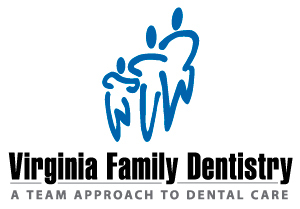Since our first breath at birth, most of us have taken for granted that our breathing is normal and healthy. However, how we breathe can have significant consequences for our health, including dental disease, poor sleep, and, where our children are concerned, changes in the growth and development of the face and jaws.
There are two pathways for breathing: the nose and the mouth. While it may be beneficial to breathe through your mouth at times, such as during vigorous exercise, the best way to breathe is through the nose, especially when sleeping.
There are several benefits of nasal breathing. When air moves through the nose, the mucus and the tiny hairs, called cilia, warm, humidify, and filter the air. This results in air that is cleaner and less likely to dry out the lungs and other parts of the airway. Additionally, nitric oxide is released that may act to kill bacteria and reduce inflammation. Breathing through the nose also allows for optimal oral posture with the tongue at rest against the roof of the mouth, the teeth lightly in contact, and the lips closed. For young children, this posture applies pressures that promote optimal growth of the jaws and airway and reduces the likelihood of crooked teeth.
Breathing through your mouth not only lacks the advantages of nasal breathing, but also has several detrimental consequences. Breathing through the mouth dries out the lips and mouth leading to bad breath and dental disease, such as cavities and red and swollen gums. Mouth breathing can also contribute to poor sleep, headaches, and digestive disturbances. Children who breathe through their mouths often don’t sleep well which can lead to sleep disorders, poor growth, and inability to concentrate, as well as other symptoms similar to ADHD (fidgeting, absent-mindedness, short attention span, etc.).
Because our children experience so much growth while sleeping, the way they breathe while asleep is particularly important. Breathing with the mouth open changes the way the face and jaws grow, resulting in long narrow faces, smaller jaws, a recessed chin, crooked teeth, and smiles that show a lot of the gums above the teeth. Some dentists call this long face syndrome. In addition to more extensive orthodontic work, these changes can make the airway smaller and put the individual at risk of other diseases later in life, such as obstructive sleep apnea. Studies have shown that when mouth breathing is corrected early, while children are still growing, these features can be reduced or even reversed. Early identification and correction of mouth breathing can have significant long-term benefits.
A common cause of mouth breathing is an obstruction of the airway such as a deviated septum, nasal polyps, tonsils, or adenoids. Breathing through the mouth bypasses these obstructions and moves the tongue forward, opening the airway and allowing air to pass. A runny nose due to a cold is likely brief enough not to have long-term effects, but someone who has a chronic runny nose due to allergies or persistent illness may develop a mouth-breathing habit that is difficult to eliminate.
Mouth breathing has become more common thanks to persistent exposure to illnesses and allergens in our modern indoor environments. If you notice your child habitually mouth breathing, it is important to identify and treat the cause. Eliminating obstructions to the airway and making changes to your child’s oral posture at an early age to reduce or eliminate mouth breathing helps promote optimal growth and reduces the risk of numerous health consequences.





